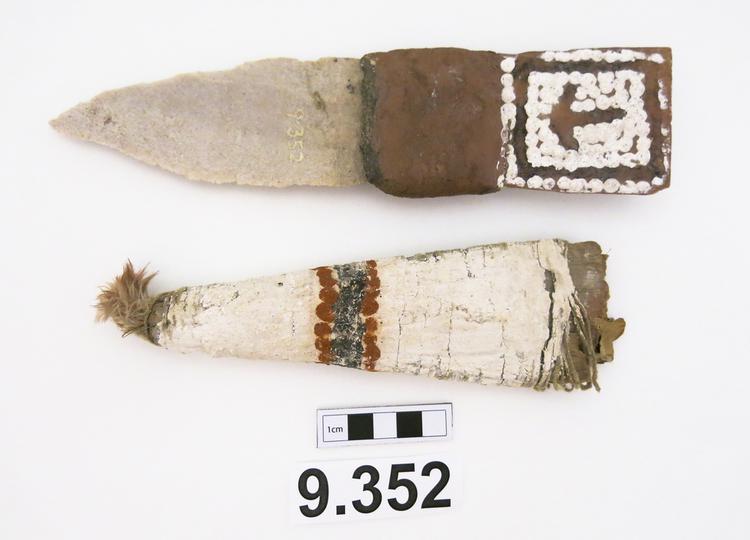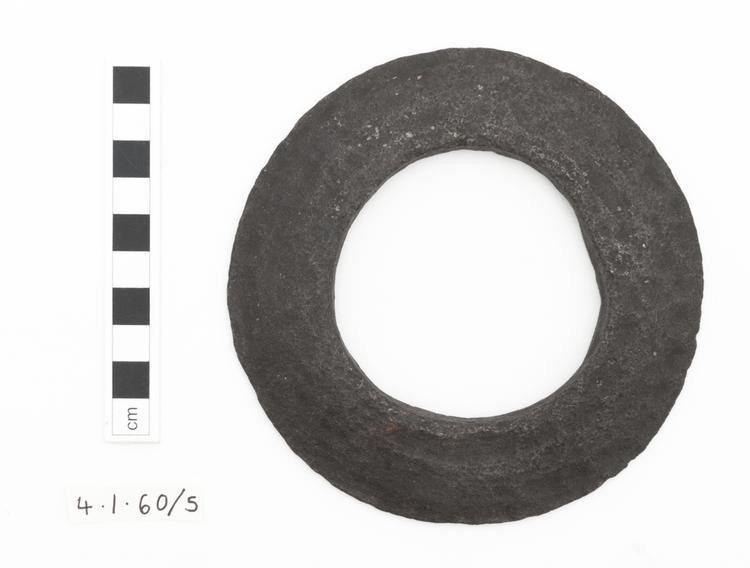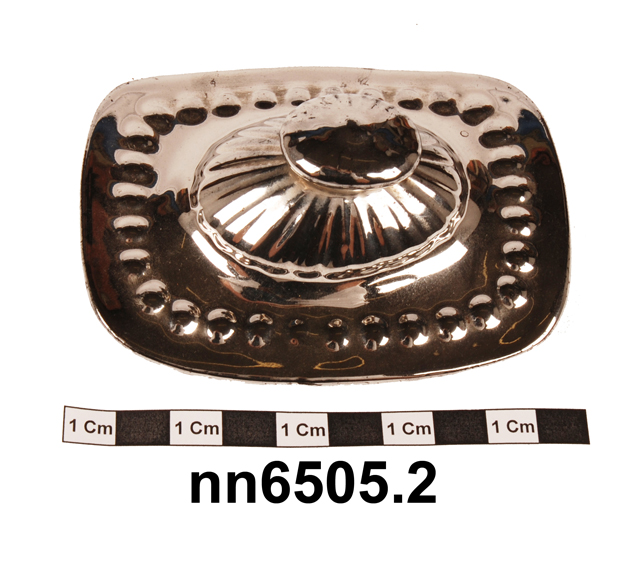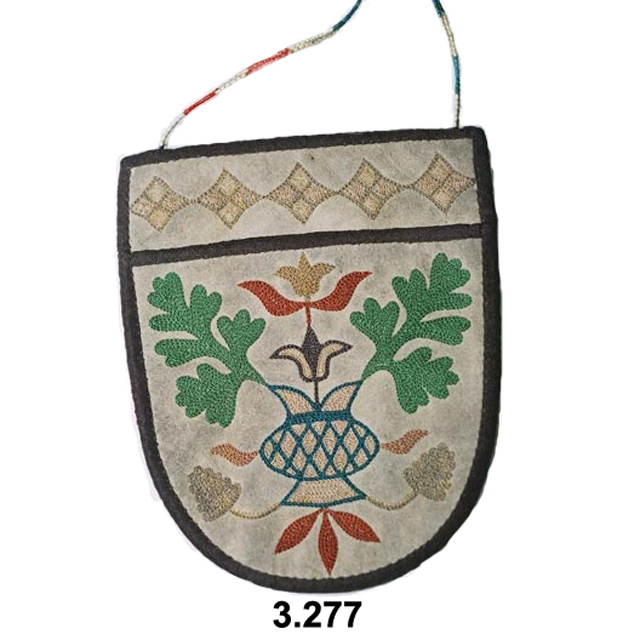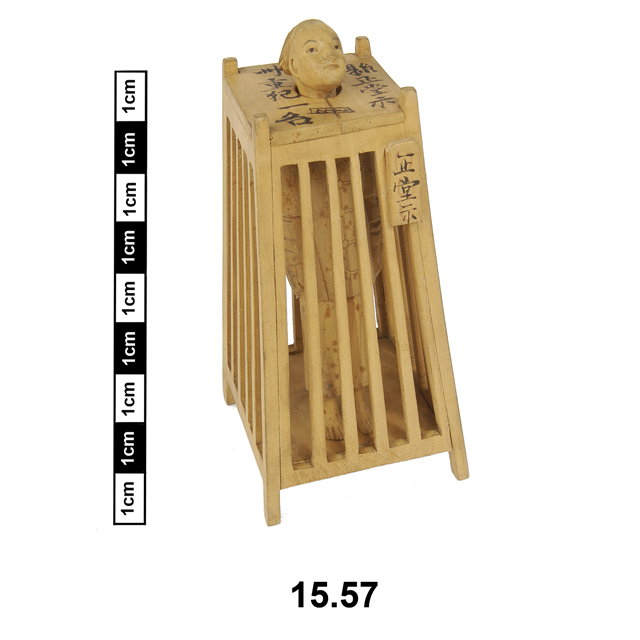
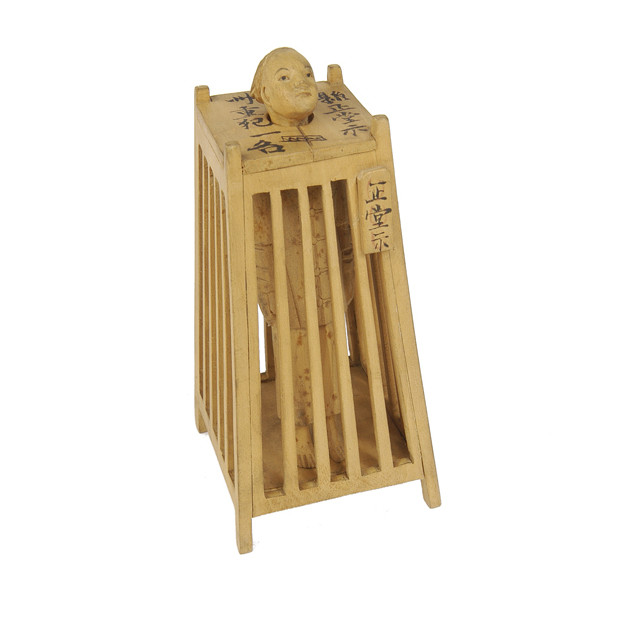
Carved wooden model depicting the punishment of 'li jia' (standing in a cangue-cage). A male offender was kept standing inside a wooden cangue cage with his head exposed above. As the cangue is taller than the offender, he would need to raise his heels. He was punished by not being able to sit down and also by dying slowly in public. This method of punishment was first used in the Wanli period (1573-1620) of the Ming dynasty. Inscriptions written on top of the cangue in black ink indicate that he is a serious offender from Taizhou, Zhejiang province.



